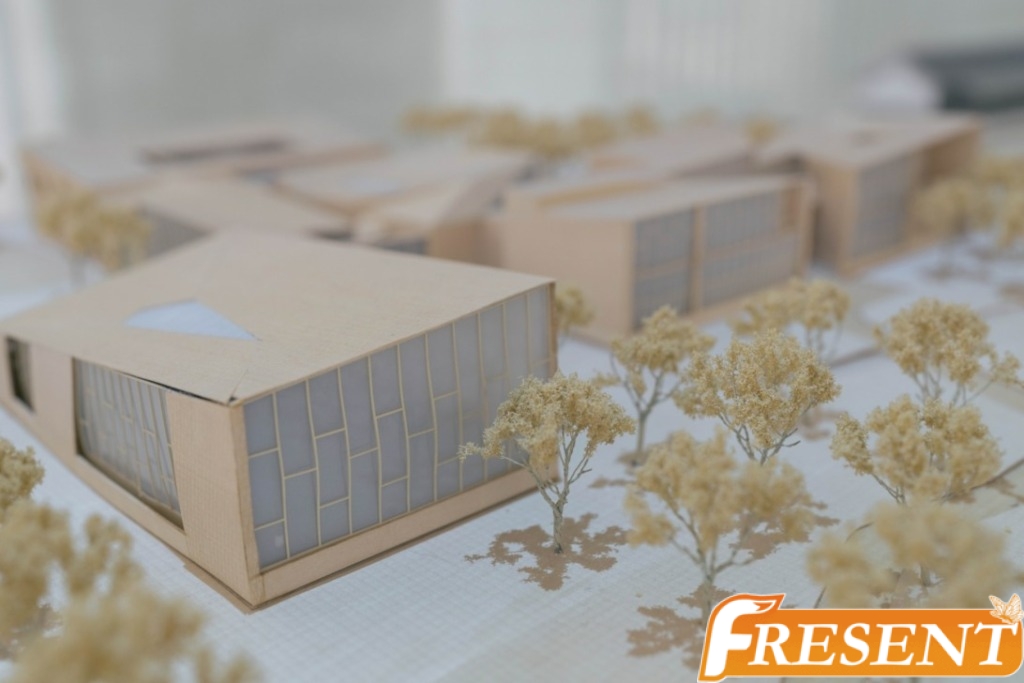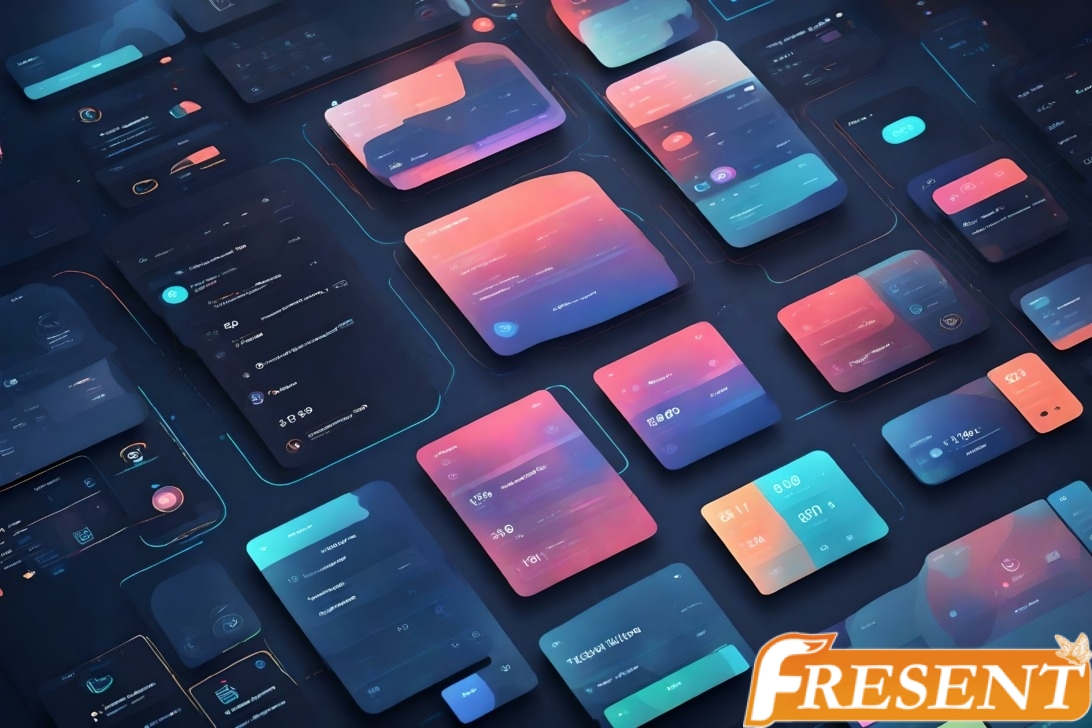UI/UX design has become an essential aspect of any digital product strategy. A well-designed user interface and experience can make the difference between a successful product and one that falls short in meeting user needs. However, not everyone is a professional designer or has experience in UI/UX design principles. For non-designers looking to create effective digital products, it can be challenging to know where to start and how to approach designing for optimal user experience.
This article aims to provide practical guidance for non-designers on UI/UX design principles. By understanding the basics of UI/UX design, defining target audiences, conducting user research, creating user personas, establishing user goals, iterating and improving designs, measuring success metrics, staying up-to-date with design trends and collaborating with designers and developers – readers will gain valuable insights into how they can develop effective digital products that meet their users’ expectations while achieving business objectives.
Understanding the Basics of UI and UX Design
The fundamental principles of UI and UX design encompass the core concepts, methodologies, and techniques that are utilized to create visually appealing and functional digital interfaces. UI stands for user interface, which refers to the way users interact with a particular product or service. On the other hand, UX stands for user experience, which encompasses all aspects of a user’s interaction with a product or service. While both UI and UX design are crucial in creating an effective digital product, they differ in their focus: UI focuses on the visual elements of a design while UX aims to provide an optimal experience for users.
Understanding the differences between UI and UX is essential in creating an effective digital interface. A well-designed user interface can attract potential customers and lead them towards utilizing a particular product or service. However, it is equally important to ensure that users have a positive experience when interacting with the product/service- this is where good user experience comes into play. The importance of User Centered Design (UCD) cannot be overstated in ensuring that both UI and UX work together seamlessly to provide users with an optimal experience.
Defining your target audience is paramount in creating effective UI/UX designs that cater to their needs effectively. By understanding who your target audience is, you can tailor your designs accordingly so that they resonate more with those specific individuals/groups. This helps create products/services that meet specific needs while providing excellent usability; thus enhancing overall customer satisfaction levels.

Defining Your Target Audience
Identifying the intended recipient of a product or service is a critical aspect of formulating an effective marketing strategy, and this holds true in UI/UX design as well. Defining your target audience allows you to create user-centered designs that cater to their specific needs and preferences. To achieve this, it is important to understand the importance of empathy in designing for users.
Empathy involves putting yourself in the shoes of your target audience and understanding their perspectives, emotions, and motivations. This requires careful observation, active listening, and open-mindedness. By empathizing with your users, you can gain valuable insights into their behavior patterns and identify pain points that need addressing. Utilizing analytics can also help you gather quantitative data on user behavior such as click-through rates, bounce rates, time spent on each page, etc., which can inform your design decisions.
Ultimately, defining your target audience through empathy and analytics helps ensure that your UI/UX designs are tailored to meet the specific needs of your users. Conducting user research is the next step in creating successful designs by gaining a deeper understanding of what motivates them to use your product or service.
Conducting User Research
Conducting user research is a crucial step in creating effective designs that cater to the needs and preferences of your target audience. Before starting any design project, it is important to understand who your users are, what they need, and how they behave. This can be achieved through various techniques such as surveys, interviews, observations and analyzing user feedback.
Interviews can be an effective way to gain insight into the thoughts and behaviors of your users. When conducting interviews, it is important to ask open-ended questions that allow users to share their experiences and opinions freely. Additionally, observing users in their natural environment can provide valuable information about how they interact with products or services.
Analyzing user feedback is another important aspect of user research. Feedback can come from a variety of sources including customer support emails, reviews on social media platforms or forums dedicated to specific products or services. By analyzing this feedback, designers can identify pain points experienced by users and determine areas for improvement in their designs.
In order to create effective designs that meet the needs of your target audience, it’s essential to have a deep understanding of who they are. Once you’ve conducted thorough research through interviewing techniques and analyzing user feedback data, you can move onto creating user personas – which will further help guide product development decisions based on real-world insights gleaned from your research efforts.
Creating User Personas
Developing a deep understanding of user behavior and preferences is crucial for creating effective designs, which can be achieved through the creation of user personas. User personas are fictional representations of ideal users that designers create based on their research findings. These personas help designers understand the needs, goals, and motivations of their target audience.
Creating effective personas involves incorporating user feedback into persona development. This feedback can come from various sources such as surveys, interviews, or focus groups. Designers must gather as much information as possible to accurately represent their intended users in the persona. The more details they include about their users’ demographics, behaviors, and attitudes towards technology and design, the better they will understand how to tailor their designs to meet those needs.
Establishing user goals is the next step in designing effective UI/UX experiences. By understanding what motivates users to use a product or service, designers can develop interfaces that help them achieve those goals efficiently and effectively. Personas play an important role in this process because they provide designers with insights into what drives their target audience’s behavior and decision-making processes. With these insights in mind, designers can craft interfaces that align with their users’ desires while also achieving business objectives.
Establishing User Goals
Understanding what motivates users to achieve their goals is essential for creating effective user interfaces. A user-centric approach that focuses on the needs and desires of the end-user is crucial in designing interfaces that are relevant, engaging, and easy to use. When establishing user goals, it is important to prioritize them based on their significance and impact on the overall experience of the user.
Goal prioritization helps ensure that the most critical goals are addressed first in the design process. This approach ensures that users can accomplish their primary objectives with ease while also catering to secondary objectives. It also enables designers to create a hierarchy of actions for users to follow when interacting with an interface. Prioritizing goals allows designers to focus on providing value-added interactions between users and interfaces by simplifying complicated processes.
Structuring information architecture requires understanding how users interact with information presented through various channels. Effective structuring requires knowing how best to present information in a way that enhances usability while keeping it easily accessible and understandable for users. By integrating user-centered design principles into information architecture, designers can create intuitive navigation paths that help users find what they need quickly and efficiently without feeling overwhelmed or lost.
Transitioning from establishing user goals into structuring information architecture requires a thorough understanding of both concepts as they are interlinked components of UI/UX design. The next step involves implementing these principles into actionable designs aimed at meeting user needs effectively and efficiently using compelling visual cues, intuitive navigation structures, and simplified processes.
Structuring Information Architecture
After establishing user goals, the next step in creating a successful UI/UX design is to structure the information architecture of the website or application. This involves organizing and prioritizing content to make it easily accessible and understandable for users. Site mapping is an essential tool that helps visualize how different pages and sections of a site interact with each other. It provides a clear overview of the site’s hierarchy and helps designers determine how to group related content.
Effective navigation design is crucial in making sure users can find what they need quickly and efficiently. Navigation should be intuitive, consistent, and easy to use across all devices. A well-designed navigation system allows users to move through the site without getting lost or confused. The placement of links, buttons, menus, and search bars are all important considerations when designing navigational elements.
Content organization is another critical aspect of information architecture. Designers must prioritize content based on its importance to users’ needs while also ensuring that everything remains easily accessible. Hierarchy plays a vital role here; placing essential content at the top level will ensure that it gets noticed first by users. By prioritizing elements correctly within your website’s hierarchy, you can guide visitors through your site in a logical way that ensures they don’t miss anything important.
Structuring information architecture properly is only one part of creating an effective UI/UX design; designing user flows is equally important in delivering an optimal user experience. By incorporating these principles into your design process, you can create interfaces that are both intuitive and aesthetically pleasing while ensuring that users can access the right information quickly and efficiently without frustration or confusion.
Designing User Flows
Designing user flows involves creating a clear path for users to achieve their goals within a digital interface. It is essential to consider the target audience, their needs, and how they interact with the interface. User journey mapping is an effective way of identifying potential snags in the user flow and making necessary changes before launching the product.
Optimizing user experience requires that designers understand what motivates users to use a particular product or service. By understanding this motivation, designers can create user flows that are intuitive and easy to navigate. A well-designed user flow can lead users from one section of the interface to another seamlessly, ensuring that they remain engaged throughout.
Creating wireframes and prototypes is the next step after designing user flows. Wireframes provide a visual representation of how each element of the interface will look on screen, while prototypes allow users to test out different features before launch. In conclusion, designing effective user flows is crucial in optimizing user experience within digital interfaces. The subsequent stage of creating wireframes and prototypes helps bring these designs to life and ensures that they meet users’ needs effectively.

Creating Wireframes and Prototypes
The creation of wireframes and prototypes provides a tangible representation of the user flow, allowing for testing and refinement before launching the product. Wireframes are basic visual guides that outline the structure and layout of a page without any design elements, while prototypes are interactive mockups that simulate user interactions with the product. Both wireframes and prototypes serve as critical tools in the design process, helping designers to identify potential issues or flaws in their designs.
Wireframing tools play an essential role in creating effective wireframes. There are various wireframing tools available online that simplify the process of creating these basic layouts. Some popular options include Balsamiq Mockups, Axure RP, Sketch, Figma, and Adobe XD. These tools offer pre-designed interface elements such as buttons, input fields, icons, etc., which can be easily dragged and dropped onto the canvas to create a visual representation of the page’s structure.
Prototyping techniques allow designers to test and validate their designs before investing significant resources into development. Prototypes help to identify usability issues early on by simulating user interactions with the product. This allows designers to refine their designs based on feedback from real users and ensure that they meet their needs effectively. Some popular prototyping techniques include paper prototyping (sketching out ideas on paper), low-fidelity prototyping (using simple materials like cardboard or foam), high-fidelity prototyping (using digital tools like InVision or Marvel), among others.
Creating wireframes and prototypes is just one step in designing an effective UI/UX experience. The next step involves choosing appropriate colors, typography, imagery, etc., which will be discussed further in subsequent sections. By following these principles of UI/UX design effectively with a focus on user needs throughout each stage of development can lead to successful products that meet users’ expectations while achieving business goals simultaneously.
Choosing Appropriate Colors, Typography, and Imagery
When selecting appropriate colors, typography, and imagery for a product, designers must consider the emotional impact they want to convey to users through visual cues. Color psychology plays a significant role in this process as different hues can evoke specific emotions and reactions from users. For example, blue is often associated with trust and professionalism, while red can signify urgency or danger.
Visual hierarchy is another crucial factor when choosing design elements for a product. The use of size, color, and placement helps guide the user’s attention to important information on the screen. Designers must ensure that their choices are consistent throughout the product to avoid confusion or frustration for the user.
Font pairing and image selection also play an essential role in creating a cohesive design language for a product. The right font pairing can enhance readability and improve the overall aesthetic of the interface. Similarly, choosing images that align with the brand’s tone and style reinforces its message to users.
Implementing responsive design ensures that designs adapt seamlessly across various devices, providing an optimal user experience regardless of screen size or orientation. By considering these factors when designing products, non-designers can create visually pleasing interfaces that effectively communicate their intended message to users.
Implementing Responsive Design
Implementing responsive design is crucial for ensuring that a product’s interface adapts seamlessly across various devices, providing an optimal user experience regardless of screen size or orientation. Media queries and flexible layout are essential components in achieving this goal. Media queries help to identify the device’s screen size and adjust the layout accordingly, while a flexible layout ensures that content can be resized without losing its integrity.
A mobile-first approach is also important when implementing responsive design. This means designing for mobile devices first before scaling up to larger screens. By prioritizing mobile devices, designers ensure that the most critical features are accessible on smaller screens and can be easily adapted to larger ones using breakpoints. Breakpoints are specific areas where the design changes to accommodate different screen sizes.
Implementing responsive design is a fundamental principle in creating successful user interfaces. It involves utilizing media queries and flexible layouts to adapt content seamlessly across different screen sizes and orientations while adopting a mobile-first approach helps prioritize key elements on smaller screens before scaling up with breakpoints. The next step would be conducting usability testing to ensure that users have no difficulties navigating through the interface irrespective of their device type or orientation.
Conducting Usability Testing
Conducting usability testing is a crucial step in ensuring that a product’s interface meets the needs of its users. Usability testing techniques involve observing users interacting with the product, collecting their feedback and analyzing it to identify potential issues. User feedback analysis provides insights into user behavior and preferences, which can inform design decisions and help create more user-friendly interfaces.
Usability testing should be conducted throughout the design process to ensure that the interface is easy to use from start to finish. It is not enough to test only at the end of development; usability testing should begin as early as possible in the design process so that any issues can be identified and addressed before they become major problems. By incorporating user feedback into each iteration of design, developers can create interfaces that are tailored specifically to their target audience.
Iterating and improving based on user feedback is an ongoing process that requires continuous effort from designers, developers, and stakeholders alike. It involves making incremental changes based on user feedback until the interface achieves optimal usability for its intended purpose. By taking a user-centered approach throughout each stage of development, designers can create products that meet or exceed users’ expectations while also meeting business goals such as increasing conversion rates or reducing support requests.
Iterating and Improving
Having conducted usability testing, it is important to keep iterating and improving the design. Continuous improvement allows for a better user experience and ensures that the design meets the needs of the users. User feedback is a crucial aspect of this process as it provides insight into what works and what doesn’t.
Iterating involves making small changes to the design based on user feedback. It’s important to prioritize these changes based on their impact on the user experience and implement them incrementally. This approach ensures that any negative effects resulting from changes can be addressed before they become major issues.
Improving the design through iteration requires a commitment to ongoing testing and refinement. Designers must remain open to feedback and willing to make changes as necessary. This process helps create a more effective product that meets the needs of its users. In measuring success, designers can evaluate how well their product achieves its goals, whether it’s increasing sales or reducing errors in use.
Transitioning into measuring success, it’s important to have clear metrics in place for evaluating performance. By setting measurable goals at each stage of development, designers can determine whether their iterations are leading towards successful outcomes or if further adjustments are needed.

Measuring Success
To evaluate the effectiveness of a product, it is important to establish clear metrics for measuring success throughout the development process. Measuring success helps designers understand how well their design choices are addressing user needs and achieving business goals. There are various ways to measure success, but user feedback is one of the most powerful tools.
User feedback enables designers to gain insights into how users interact with their products, identify pain points in the user experience, and make informed decisions on how to iterate and improve their design. Designers can gather user feedback through surveys, interviews, usability tests, or by analyzing usage data. By collecting this information regularly throughout the development process, designers can track changes in user satisfaction with their product and adjust their design accordingly.
Measuring success is critical for creating effective UI/UX designs that meet both user needs and business objectives. User feedback plays a vital role in evaluating design effectiveness as it provides valuable insights into how users interact with a product. Designers should prioritize gathering regular feedback from users throughout the development process to ensure they stay on track towards meeting their goals. In the next section, we will explore another critical aspect of UI/UX design – staying up-to-date with design trends.
Staying Up-to-Date with Design Trends
Staying up-to-date with design trends is crucial for any designer, whether professional or amateur. Given the constantly evolving nature of technology, designers must explore new technologies to stay on top of their game. Participating in design communities can also be helpful, as it provides access to a wealth of information and insights from other designers with similar interests and experiences. By staying informed about the latest trends and innovations in the field, designers can create more effective and engaging designs that meet the needs of their users.
Exploring New Technologies
The pursuit of novel technological advancements presents numerous possibilities for enhancing user experience in UI/UX design. Exploring VR technology and innovations in AR design are two areas that have the potential to revolutionize how people interact with digital interfaces. Virtual reality allows designers to create immersive experiences, transporting users to new environments where they can interact with products and services in a more natural way. Augmented reality, on the other hand, enables designers to overlay digital content onto the physical world, creating new opportunities for engagement.
By staying up-to-date with these emerging technologies, non-designers can gain valuable insights into how they may impact user behavior and expectations. Additionally, by participating in design communities, individuals can share their knowledge and collaborate with others who are also exploring new frontiers in UI/UX design. This exchange of ideas can inspire creativity and innovation while helping non-designers stay current on industry trends and best practices. Ultimately, those who embrace emerging technologies and actively engage with others in the field will be better equipped to deliver exceptional user experiences that meet the evolving needs of their audiences.
Participating in Design Communities
Active participation in design communities can broaden one’s understanding of emerging technologies and industry trends, fostering collaboration and innovation towards the delivery of exceptional user experiences. Here are some benefits of networking and finding design inspiration through participating in design communities:
- Learning from experienced designers: By connecting with other designers, one can gain valuable insights into best practices, design principles, and tools that can help to improve their skills.
- Discovering new trends: Networking with other designers provides an opportunity to learn about new trends in the industry and stay up-to-date with emerging technologies.
- Building a support network: Being part of a community allows for the formation of meaningful connections with individuals who share similar interests, providing emotional support during challenging times.
- Finding inspiration: Design communities provide a wealth of resources to inspire creativity, including access to design portfolios, case studies, and tutorials.
Participating in design communities is just one way to enhance one’s understanding of UX/UI principles. The subsequent section will explore how collaborating with designers and developers can further improve the quality of user experience designs.
Collaborating with Designers and Developers
Collaboration between non-designers and designers/developers is essential for ensuring that UI/UX design principles are effectively integrated into the final product. However, collaboration can present some challenges, particularly when it comes to communication. Non-designers may struggle to articulate their ideas and feedback in a way that makes sense to designers and developers, while those working on the project may use technical language that confuses non-designers.
To overcome these challenges, clear communication strategies should be put in place from the outset of any collaborative effort. This could involve establishing a shared vocabulary or using visual aids such as sketches or wireframes to communicate ideas. It’s also important for non-designers to be open to feedback and willing to make compromises when necessary.
In addition, regular check-ins throughout the design and development process can help ensure that everyone is on the same page. These check-ins don’t necessarily have to be formal meetings – they could simply involve sharing progress updates via email or instant messaging tools. By maintaining ongoing communication and fostering a culture of openness and collaboration, non-designers can work effectively with designers and developers to create products that meet user needs in an intuitive way.
Conclusion
UI and UX design are critical components of modern-day digital products. In this guide, we have discussed the fundamental principles of UI/UX design that non-designers can implement in their work. We began by defining UI and UX design, followed by identifying the target audience and conducting user research to create user personas. By establishing user goals, iterating, and improving based on feedback, designers can ensure that they deliver high-quality products that meet users’ needs.
Measuring success is vital to determine if a product meets its intended objectives. Design trends evolve rapidly; therefore it’s important to stay up-to-date with them as well as collaborate with designers and developers for optimal results. One potential objection could be the time investment required for extensive user research; however, investing time upfront can save resources in the long run by delivering successful products that satisfy users’ needs. Ultimately, designing with empathy for users is essential to create effective digital experiences.

